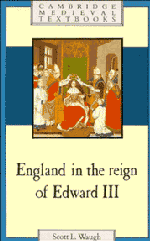Part III - Government and communities
Published online by Cambridge University Press: 05 June 2012
Summary
Monarchs never rule by themselves. They depend on agents to carry out their will. A crucial feature of medieval government was that the king's representatives were drawn from the ranks of social elites. Landlords served as royal officers, participated in decision making, and fought in the king's armies. They exercised private authority through manorial courts and public jurisdiction through franchises. Despite this overlapping of public and private power, England had produced a remarkably effective government by 1300.
The landed hierarchy on which administration depended clarified itself into distinct ranks during Edward's reign. The development of the house of lords in parliament provided the basis for identifying the nobility. Individually summoned rather than elected, the peers or peerage as they came to be known were differentiated from the knights and squires who made up the gentry. Peerage simultaneously symbolized social exclusiveness and defined a constitutional role. The clergy were likewise ranked hierarchically, with the higher members – archbishops, bishops, and some abbots – comparable to peers. And these noble grades took greater pains than they had before to define the boundaries between themselves and those below.
Government service corresponded to one's place in the echelon. Magnates, whether lay or ecclesiastic, generally occupied the highest positions as peers, councillors, military captains, and ministers. They played out their roles on a national stage, with the court as their focal point. County administration was the gentry's arena.
- Type
- Chapter
- Information
- England in the Reign of Edward III , pp. 115 - 116Publisher: Cambridge University PressPrint publication year: 1991

